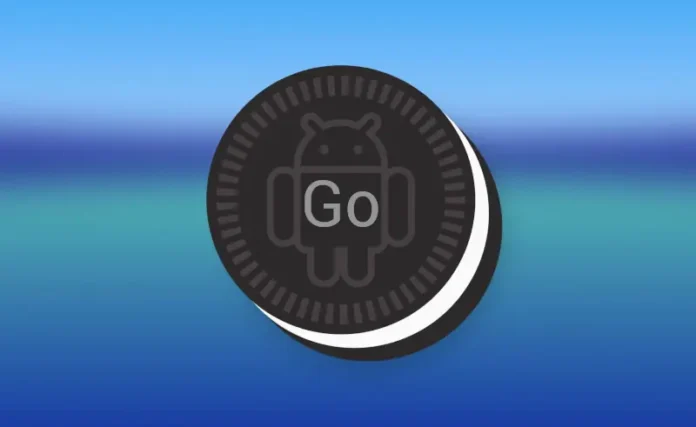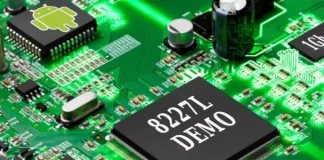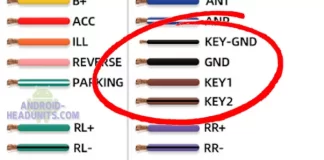Why is Android 8.1go so popular on the lower end and cheaper Android Headunits?
What is Android 8.1 Go, and why is there an Android Go edition anyway?
Why was my Android Headunit sold as Android 8, but testing shows it as Android 8.1go?
Android 8
Android 8.0 is Android Oreo for smartphones that appeared in 2017. Android ‘O’, which later became Android Oreo or Android 8, has an API level of 26.
Android 8.1
Android 8.1 contains minor improvements over Android 8 and was given the API level 27.
Android 8.1 and Android 8.1go editions are not to be confused.
Android 8.1 changes
Android 8.1 brought almost a dozen key changes to Android 8. Here are a few of the key features that Google wanted people to know about when the updated 8.1 launched.
Memory space saving
In the world of Android 8.1 Oreo, a clever space-saving innovation emerges. It identifies apps you’ve left untouched for some time and gently labels them as ‘Inactive.’ Then, when your phone senses that storage space is running thin, it gracefully trims down its cache size. It’s a nifty feature designed to keep your phone running smoothly. The best part? You can unleash this magic with just a tap, thanks to the manual activation option provided by your phone’s manufacturer.
Auto Dimming Buttons
In the later iteration of Android Oreo, you’ll notice a thoughtful upgrade to the navigational buttons. They now boast an ingenious auto-dimming capability, intelligently reducing their brightness when your screen remains untouched for a while. The navigation bar has also undergone a sleek transformation, appearing more compact with daintier icons. It’s all about a smarter and more stylish user experience.
Power menu
The power menu, which emerges when you hold down the power button, has received a fresh makeover. The latest update introduces a side-aligned power menu that eliminates the need for any stretching or strain when you want to power off your phone. It’s all about convenience at your fingertips.
Connected device battery level
Android 8.1 now includes built-in support for Connected device Bluetooth battery level monitoring. This feature was previously exclusive to OEM skins like the Huawei EMUI and custom ROMs such as LineageOS (CyanogenMod). This means you can easily view the battery status of your connected devices right in the status bar.
Prettier Quick Settings Bar
In Android 8.1, a significant improvement has been introduced. The quick settings bar, which gracefully slides down from the top edge, now features adaptive quick settings. With this update, the quick settings bar becomes more than just transparent; it intelligently adjusts its appearance to match the lighter or darker tones of your home screen’s wallpaper, creating a seamless and visually pleasing experience.
Android 8.1 Go
Android 8.1 Go is a ‘Go’ edition of Android based on the Android Oreo (Android 8.1). The Go editions of Android are stripped of the more memory-intensive and processor-intensive features. This seriously dumbed-down version of Android has the look and feel of Android Oreo but has many features lacking.
Features are removed from Android’s ‘Go’ editions, including 8.1go, to allow the software to run on very limited hardware and designed particularly for ultra-budget phones with only 1 GB RAM and poor processing capability.
Footprint
Android 8.1 GGo has a smaller footprint. The missing features can free up around 270 MB of RAM compared to the Android 8 version.
With the smaller footprint, more of the processing power can be directed to a smaller overall process, meaning the apps that can work could load more quickly with Android 8.1 Go over Android 8 when running on limited hardware.
With such a tight budget on RAM, the Android 8.1go can perform more slowly overall, as apps need to be flushed from the RAM as you switch between them. With a 4 GB RAM headunit, there is spare RAM to keep apps cached in memory for quick activation on subsequent opening. Android Go versions running on limited RAM won’t have that luxury and will need to flush the unused app from memory to make room for the next app to load.
Google Maps
Google Maps turn-by-turn instructions. There have been reports of Android 8.1go unable to complete the map’s turn-by-turn instructions reliably. You may discover that your Android Headunit refuses to make the voice turn-by-turn instructions (that are one of the killer features of Google Maps), and this belies its Android 8.1 go heritage with poor quadcore performance and limited RAM available.
Poor
In poorer countries where expensive smartphones are only available to the wealthy, it became possible to ship budget phones with a modern Android version (of 2017 vintage). Google could reach more people with their operating system by making a stripped-down, lightweight version for the ultra-cheap phones that were now more affordable to those on limited budgets.
Android Headunits
Android headunits with only 1 GB RAM or 2 GB RAM and a poor quadcore processor are ideal candidates for Android 8.1go because they mirror the performance of an ultra-budget phone. Not capable of running the full Android 8 ‘Oreo’ without lags and slowdowns, the headunits are forced to either run an older version of Android like KitKat (Android 4.4.4) or Marshmallow (Android 6) or a more modern Android 8.1 go edition.
Higher-numbered Android versions always sell better than the older versions. As new versions are added, the number gets higher, and lower numbers are considered obsolete by the general public. It is easier to sell Android 8.1 Go headunits than Android 6 or Android 4.4.4 because Android 8.1 Go looks better than Android 4 or Android 6 on the sales page. It is all down to uneducated purchasers looking for a better deal, thinking a bigger number is always better.
It is even easier to sell Android 10 headunits! However, these are often just faked versions of Android 10 when they run on budget hardware, as they are actually running Android 8.1go.
Go Edition
All Go editions of Android are for limited hardware and will lack some, if not all, more resource-hungry features.
The following features are turned off by default on Android (Go edition):
This is a list of the default turn-off features available in Android 8.1 but disabled in Android 8.1 Go. If one of the features below is missing from your headunit, you may be on the Go Edition of Android 8.1.
- Picture-in-picture support
- System alert Window permission (draw over other apps)
- Split-screen or multi-screen window
- Live wallpapers
- Multi-display
- Shortcuts or deep shortcuts in the launcher
- Reduced maximum width and height of any image in remote view
- VR mode
Checking your Android 8.1go
You can use AIDA64 from the Play Store to check for API levels that may contradict the faked Android version.
Android 8 is API level API level 26; this is not often found on Android Headunits because the is a slightly later version of 8.1.
Android 8.1 is API level 27 and is often confused with the 8.1go version.
Android 8.1 Go edition is API level 27 – see the confusion. It is quite easy to pass off a limited and budget Android headunit as running Android 8 when it is actually Android 8.1 Go with its limitations listed above.
While Android 8.1 Go is better at managing memory and resources, with modern hardware, it is not really necessary, and buying a fake, junk, or outdated headunit won’t help you use it to its full potential.
Other Android Go editions
Yes, there are later versions of Android with a ‘Go’ edition, including Android 13go, so that the cycle will continue.







